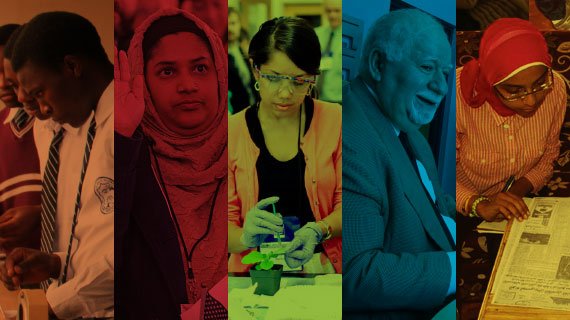
More than 60 years ago, Carnegie Corporation of New York’s Board Chairman, Russell Leffingwell, coined the term “glass pockets” at a congressional hearing, highlighting the Corporation’s long-held belief in the fundamental importance of transparency. A few years later, the Corporation’s ninth president, John Gardner, defined the policy: “A foundation should practice full disclosure. The larger it is, the more energetically it should disseminate full information on its activities.” Throughout its history, the Corporation has applied this principle, and our annual reports are an important part of that practice—indeed, the Corporation was among the first foundations to publish an annual report, starting in 1921. As an institution whose mission is to harness private wealth for the public good, we believe that in order to earn the public’s confidence, we owe the American people transparency in all of our financial and programmatic activities.
In keeping with this core value, we also believe that knowledge is not to be shelved away, but shared broadly, with experts and the public alike, in order to foster an informed citizenry. As our founder, Andrew Carnegie, professed, an enlightened public is essential to the strength of our democracy. Accordingly, for more than 100 years the Corporation has supported education initiatives, from preschool to K–12 to higher education. Education, after all, should not be viewed simply as a necessity for each individual, but rather as an investment in the future of our democracy and our society.
We are not alone in this effort. For decades, many of America’s major foundations have helped advance our nation’s educational system and goals. They have done so in many other fields, of course, including those that Mr. Carnegie was most passionate about and which the Corporation continues to support: international peace and U.S. democracy. Together, American foundations help fund the nation’s diverse independent sector, comprised of some 1.5 million nonprofit organizations, which account for 10 percent of all private sector employment nationwide. The robustness of the American independent sector is a key strength of our nation’s civil society, and distinguishes the United States from many other countries around the world. We, along with the rest of American philanthropy, are proud of our collaborations with nonprofits, whether universities, think tanks, cultural institutions, community groups, or direct service agencies.
In partnering with these organizations, foundations serve as laboratories of experimentation and innovation for the nation. As Mr. Gardner put it, the independent sector is one “in which we are allowed to pursue truth, even if we are going in the wrong direction; allowed to experiment, even if we are bound to fail; to map unknown territory, even if we get lost.” Not only do foundations complement nonprofits, but they also form public-private partnerships with business and with government, at the local, state, and federal levels.
Just as the nonprofit field boasts incredible breadth and diversity, so do American foundations. Philanthropy is a particularly American practice, for giving is embedded in our culture. Alexis de Tocqueville wrote in the early 1830s that Americans “willingly sacrifice a portion of their time and property” to improve the welfare of their fellow men and women. In 2014, Americans gave more than $358 billion, not to mention nearly 7.7 billion volunteer hours, to educational, health, religious, cultural, environmental, and other causes, comprising a broad swath of institutions and ideological views.
To maintain this partnership between the American people and the independent sector, accountability and transparency are essential. Accordingly, over the past century the Corporation has continually analyzed the impact of our investments in institutions, causes, and movements, whether they have proven to be successes or not. We have also made sure to share our results. In this digital age, the Corporation reaches an even broader audience online, nationally and internationally. Indeed, we share not only the Corporation’s work and writings, but we also promote those of our grantees. At our core, the Corporation seeks to ensure “the advancement and diffusion of knowledge and understanding.” That is what we have always strived to do, through our own work and that of the many institutions we are proud to call our grantees and collaborators.
Vartan Gregorian
May 2016
